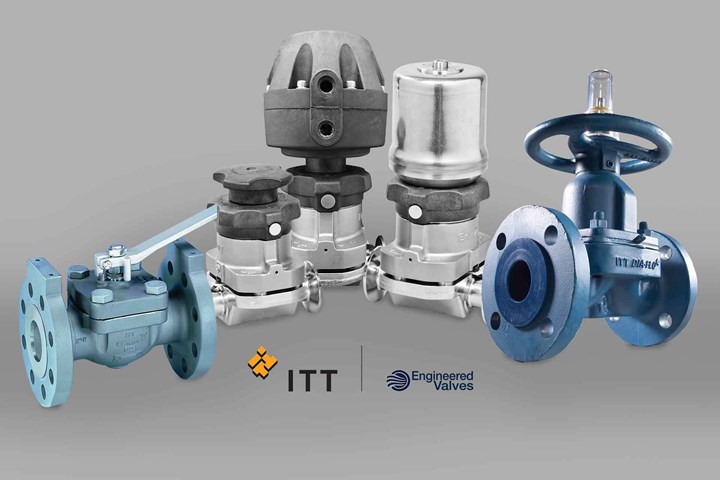Crane Engineering Awarded Distribution of ITT Engineered Valves in Five States
Expanded partnership offers growing distribution for fluid technology solutions in the Midwest.
#VMAnews
Crane Engineering, a leading distributor of fluid technology solutions in the Midwest, announced today that it was awarded distributor partnership with ITT Engineered Valves for Dia-Flo, Cam-Line, Cam-Tite and exclusivity for the high purity Pure-Flo product line. This remarkable expansion follows Crane Engineering’s previous and ongoing distribution of ITT Engineered Valves’ Fabri-Valve line.
The distribution region will span North Dakota, South Dakota, Minnesota, Wisconsin and the Upper Peninsula of Michigan, marking a significant shift in ITT’s channel strategy. The expansion of Crane Engineering’s partnership points to the company's sales growth, notably with product lines such as ITT Goulds Pumps.
"We are excited to continue our partnership with ITT Engineered Valves in a greater capacity. Ensuring our customers have access to top-tier product lines is paramount to us, and partnering with ITT exemplifies this commitment,” said Lance Crane, president and CEO of Crane Engineering.

Selection of ITT Engineered Valves products.
Photo Credit: Crane Engineering
The newly added products are built with heavy-duty materials, great for corrosive applications, and are designed to accommodate the rigorous standards of many industries, particularly pharmaceutical, chemical processing, nuclear and power generation, mining, water treatment and food and beverage. These product lines are key for customers with unique flow control and safety requirements.
“ITT is thrilled to expand its relationship with Crane Engineering,” said Steve Burch, North American sales manager for ITT Engineered Valves. “We are confident ITT’s quality products, along with Crane’s technical expertise and focus on customer satisfaction, will benefit our collaborative teams and all of our customers moving forward.”
The expanded valve line includes the following:
Dia-Flo Industrial Diaphragm Valves – Engineered for challenging environments, including chemical processing, power generation, pulp & paper, water treatment, and food, beverage, and pharmaceutical sectors. Features bonnet isolation, separating components from flow, emissions control without packing, and easy in-line maintenance with removable top works for quick access.
Pure-Flo Hygienic Diaphragm Valves – Tailored for the pharmaceutical, bioprocessing, and food and beverage sectors. The Pure-Flo design ensures superior hygiene, facilitating easy cleaning and in-place sterilization. Features compact bodies, minimized hold-up volumes, and reliable operation in BioPharm applications, with a diverse range of multivalve fabrications and integral blocks.
Cam-Line Plastic Lined Ball Valves – Specially designed for highly corrosive scenarios in the chemical sector. Features special linings, optional PVDF coatings, tight shut-off, reliable stem seal, low operating torque, and extended seal life due to its cam design.
Cam-Tite Hazardous and Critical Duty Ball Valves – Designed for challenging, hazardous, and corrosive settings seen in chemical processing, nuclear, and power generation industries. Features low operating torque, ensuring minimized "breakaway torque", offers reliable shut-off at varying pressures, and its cam action prolongs seal life by decreasing lateral loads.
RELATED CONTENT
-
An Interview with VMA's New Board Chairman
At VMA’s 83rd Annual Meeting, Ron Warren, President and COO of Bray International Inc., was elected the board chairman of VMA for the next year.
-
Free VMA Webinar: Valve Materials, Part 2
Tuesday, June 7, 2022 at 3 p.m. EDT.
-
Solenoid Valves: Direct Acting vs. Pilot-Operated
While presenting in a recent VMA Valve Basics 101 Course in Houston, I found myself in a familiar role: explaining solenoid valves (SOVs) to attendees. (I work with solenoids so much that one VMA member at that conference joked that I needed to be wearing an I Heart Solenoids t-shirt). During the hands-on “petting zoo” portion of the program, which involves smaller groups of attendees, one of the most frequently asked questions I get from people came up: What’s the difference between direct-acting and pilot-operated SOVs, and how do we make a choice?










 Unloading large gate valve.jpg;maxWidth=214)